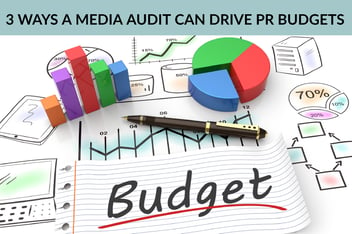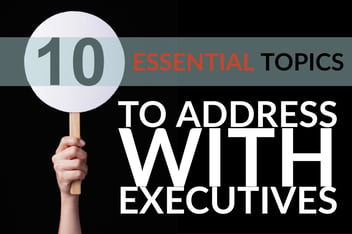How Media Audits Can Lead To Bigger PR, Marketing Budgets

Nothing gets an executive’s attention faster than being beat by a competitor. C-suite executives are wired to win. And, they want you — their marketing and PR managers — to help them win. (After all, it’s your job to help them win.)
Sharing wins is easy. Telling your boss where the company isn’t doing so well can be a lot tougher, but in order for you to help the company win, they need to know. So, don’t be afraid to show executives:
-
Where the company is falling behind,
-
Why it’s happening,
-
What your plan is to win, and
-
How much funding you need to gain ground.
A comprehensive audit of company and competitor media coverage can help you do that. If you want more budget, don’t just show them where you’re winning — show them where you’re falling behind. And tell them what the company needs to do to fix the problem.
Start with the right data
Make sure the data you present is “good data.” Too often, data that is collected from an automated media monitoring and measurement system needs to be verified for accuracy. These systems tend to deliver a lot of “junk” data that requires human oversight deleting irrelevant coverage and ensuring articles are coded correctly. There’s nothing worse than an executive taking one look at a chart and finding a mistake in the data, calling all of your data into question. It’s the fastest way to lose credibility.
So, if you lack solid data, it’s worth the time and effort to go back and gather facts and ensure your data is accurate and reliable.
Tie business outcomes into PR & marketing goals
What information do you need? Your own department’s metrics and objectives aren’t enough.
You’ll want to collect data that demonstrates both PR results and business outcomes so you can showcase how business results are tied to PR efforts. Be sure the data addresses points that are relevant to business goals.
New business bids and budget proposals should both include specifics about the goals PR intends to accomplish. Spend some time goal setting based on where you believe you can take the program and how PR can impact business outcomes. Then present the proposed PR goals and business goals to executives with an explanation of how they will be met.
Clients and executives today are more informed about measurement than in the past, and many will expect to see not only what you plan to achieve, but they will also be interested in knowing how you will track PR’s progress. Be sure your proposal explains that you have a process in place to track progress and measure success. You can win points with clients and executives by assuring them you will be monitoring competitors and developing PR strategy around meeting and beating the competition.
Define what you are asking for and use measurement data to show how that will improve results
When you propose a budget increase, have a number in mind and be sure executives are clear on what you are asking for. Then, articulate how you plan to use the increase to drive the business forward by showing how additional funds will allow you to achieve bigger and better goals.
For example, if you are asking for a budget increase of 20 percent, you need to project how you will be able to increase results by 20 percent or more. Look for examples you can use from your measurement data that will help you prove that PR outputs and business outcomes rise and fall with increases and decreases in PR budgets. This will show clients and executives how PR impacts business results and what a larger marketing budget will mean for their business.
Much of the data and broader background information you need to make this kind of a case to the C-suite can be gathered through comprehensive media audits that explore both your own media results and those of your closest competitors. Download our Media, Messaging and Marketing Audit Checklist for a breakdown of what you should expect from each type of audit, or read this case study to see how major national brands have used JONES audits to inform their next strategy.
-1.png?width=1652&height=294&name=Jones(RGB)-1.png)












